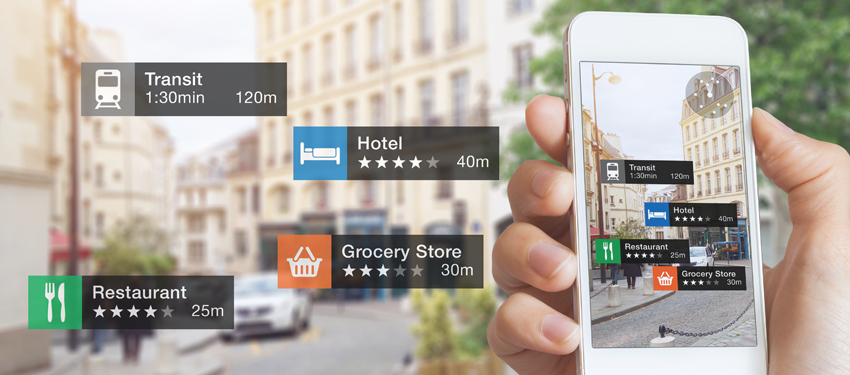66% of marketers claim interactive marketing helps to generate greater audience engagement.
Whereas traditional advertising is a one-way conversation, new immersive technology has paved the way for interactive ads -- effectively inviting customers to engage and get creative with brands.
In a mobile-mad era, where people are obsessed with apps, gaming, and innovative technologies like augmented reality (AR), immersive technology in marketing is quickly becoming the norm.
Let’s see what you can accomplish with interactive marketing today.
What is Interactive Marketing?
Interactive marketing is when brands use marketing tactics that directly respond to a consumer’s action.
This trigger-based marketing can be implemented in a range of ways, including:
- Contests - You can play on people’s natural desire to be competitive -- everyone wants to win! With a contest, you can spread brand awareness to encourage more people to engage with your brand.
- Quizzes, polls, and surveys - This is a fun way to combat customer boredom, getting more engagement than a simple text post.
- Videos and email marketing - Useful for answering common questions, and for explaining the buying process.
- Interactive infographics - By adding moving graphics and click animations, you can captivate users.
- Messenger bots - Ironically, the use of robots can humanize your brand, adding a smart, conversational touch to your customer services department.
Nowadays, consumers expect responsiveness from brands. Features like mobile-responsive websites, remarketing, and live chatbot services are commonplace now, so interactive ads fit right in.
4 Benefits of Interactive Marketing
Immersive technology and interactive ads require a little extra effort to implement, which begs the question:
Why should you bother?

Here are four benefits of interactive marketing:
1. It Increases Sales
With higher engagement, comes greater knowledge and understanding of your prospects. Over time, interactive marketing will increase sales as your interactive ads become closer aligned with customer interests.
2. It Increases Consumer Satisfaction
As your interactive ads resonate with your audience, you’ll get better at delivering on their needs, which, in turn, makes people happier.
3. Lower Marketing Costs
One of the great perks of interactive marketing is that it streamlines the online shopping experience. People don’t need to repeat themselves on every visit, as ecommerce stores remember their preferences and past actions. This personalized experience encourages repeat business, which reduces your marketing costs as you don’t have to spend more to attract more customers.
4. It Can Be Automated
We live in the age of automation. Immersive technology is designed in a way that makes it easy for businesses to track user actions. They create the video once, then let data analytics and machine learning do the rest.
Learn More: 6 Marketing Automation Trends Impacting the Future of Online Business
3 Brands Using Immersive Technology and Interactive Ads
So, just who is using immersive technology in marketing? Let’s take a look at some successful examples of interactive marketing.
Google announced it is introducing a new display ad format on Google Ads, called Swirl. This interactive ad format will provide more information to users as they interact with 3D objects in the ad.
Reebok
Reebok got pulses racing with immersive technology in Sweden. The sports giant when the company installed a combination speed camera next to a shoe display in a busy town center.
Then, they encouraged people to try running past the display. Whoever ran the fastest would win a free pair of sports shoes.
In September 2019, Facebook released three new types of interactive ads - video poll ads, playable ads, and augmented reality ads.
By offering more ways for people to engage in brand ideas, Facebook announced that it was setting out to change “digital advertising from a one-way push communication to an ongoing dialogue powered by creativity.”
Amazon & Snap
Amazon’s success in online retail is built upon interactive marketing and ecommerce personalization. In 2018, the company announced a partnership with Snap, pairing with the augmented reality app to herald a new dawn of social commerce.
Snapchat users can now use the app to take photos of barcodes on products, and then view the Amazon store information such as pricing and availability -- all inside the app.
5 Challenges of Interactive Marketing
Interactive ads sound great, but there are some significant challenges involved, especially if you want to incorporate immersive technology.

Here are five challenges to look out for when you want to bring interactive marketing into your campaign:
Human Behavior is Hard to Predict
Consumer interests change quickly. If you're going to generate a good return from interactive ads, you need to keep your ear close to the ground to know your audience.
Tip: By accessing consumer data sets, you can learn a lot from looking at the browsing history, purchasing behaviors, and social media profiles of your prospects.
Interactive Content is Somewhat Unknown
Interactive marketing is in its infancy, and so, marketers are still unsure of how best to use it.
Tip: Immersive technology is an expensive endeavor, so your team needs to know what they're doing. Get educated with expert training courses, so you know how to implement interactive marketing alongside your existing content strategy.
The Mystery of High-Quality Content
Typically, static content doesn’t offer a lot of data insights on how people engage your content. It’s impossible to understand how many people read your eBook after they downloaded it, let alone whether they felt it was valuable.
So, when it comes to interactive marketing, it can be tricky to figure out what type of content you should focus on creating.
Tip: Repurpose older content by adding interactive tools. For example, you could take a highly-shared blog with actionable website speed tips and turn it into a video that encourages people to share their experiences and comments. This is more engaging than a text post and gets the conversation going before you pitch your products or services.
You Must Pick the Right Communication Channels
Today, omnichannel marketing demands brands to utilize several channels to communicate with customers. You must figure out the best channels for your brand and audience.
Tip: Ask prospects to give feedback on their preferred channels. Observe their on-site behavior and consider the feedback to identify the best channels for interactive marketing.
Budgeting
As mentioned, it's not cheap to bring immersive technology and interactive ads into your strategy. Aside from the tools and tech, you may have to train employees and conduct intensive audience research.
Tip: Use Pareto’s 80/20 rule to determine your most important interactive marketing ideas. Evaluate the data at hand to focus on the vital few ideas that could generate the best possible return on investment (ROI). You may also consider cutting your budget in under-performing areas to free it up for interactive ads.
Learn More: 5 Content Distribution Tools to Grow your Audience
Wrap Up
Immersive technology offers a memorable user experience for consumers, and it acts as an excellent platform for interactive ads. We're sure to see more of those in the future -- Facebook Marketplace is already used by more than 800 million people in 70 countries.
With interactive marketing, your business can spread brand awareness, differentiate itself from your competitors, and increase customer loyalty. Over time, you can use interactive ads to build audience engagement, which ultimately, leads to more leads, and higher profits.
Which platform will you try interactive marketing on next?




